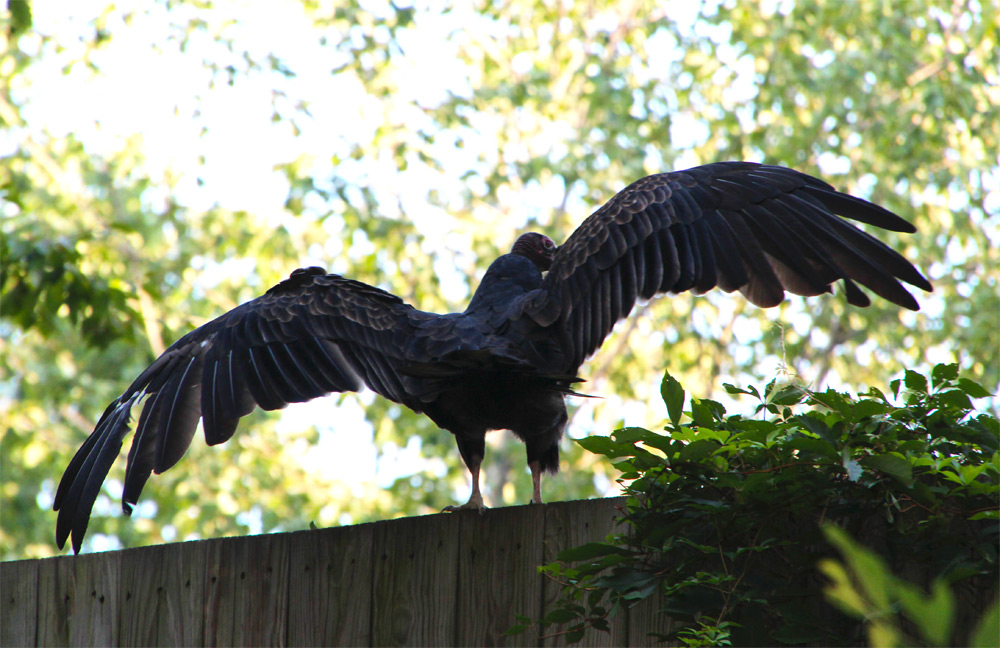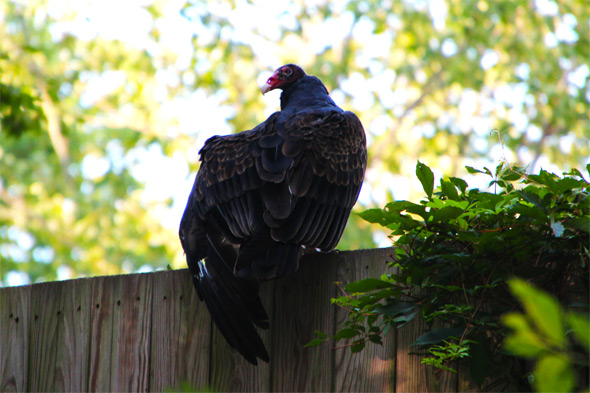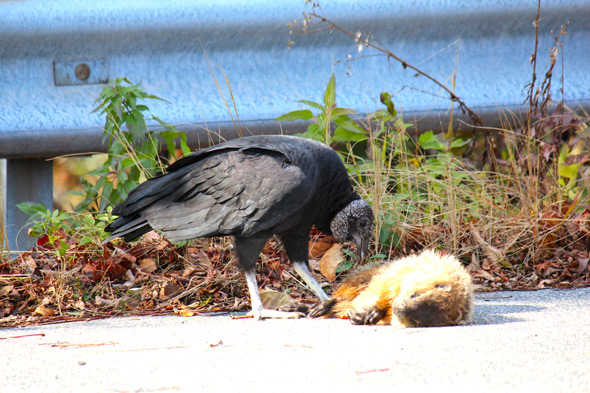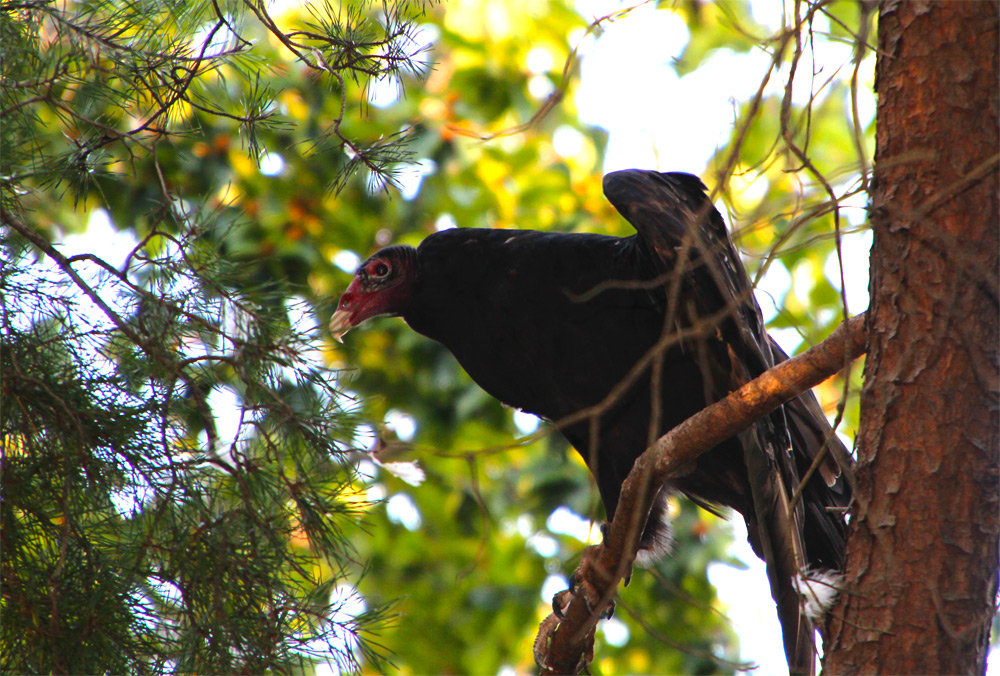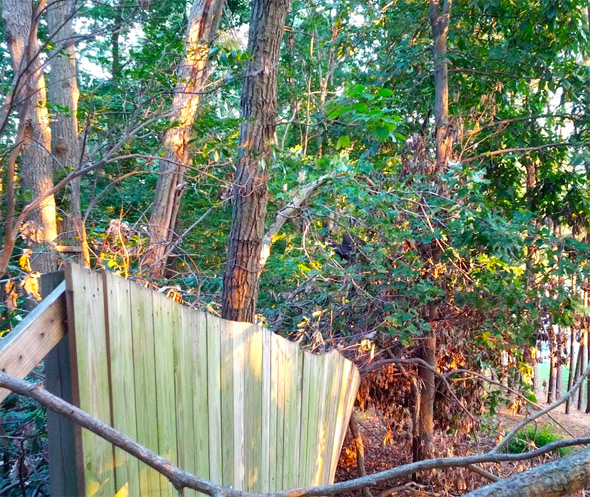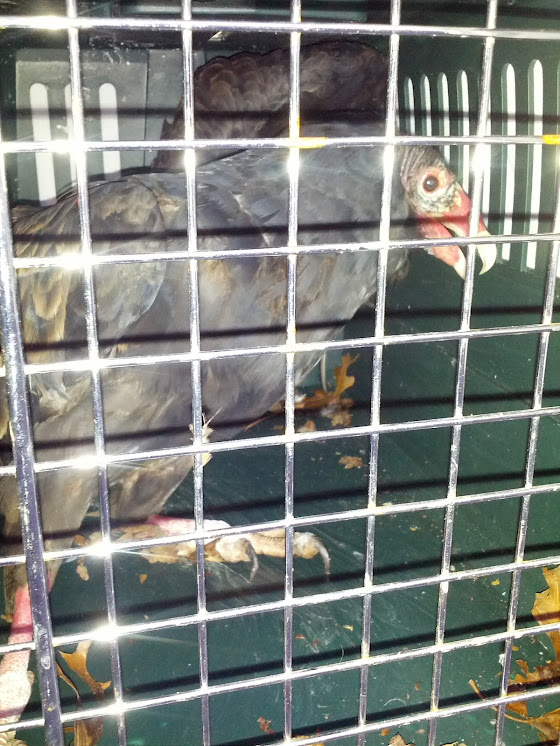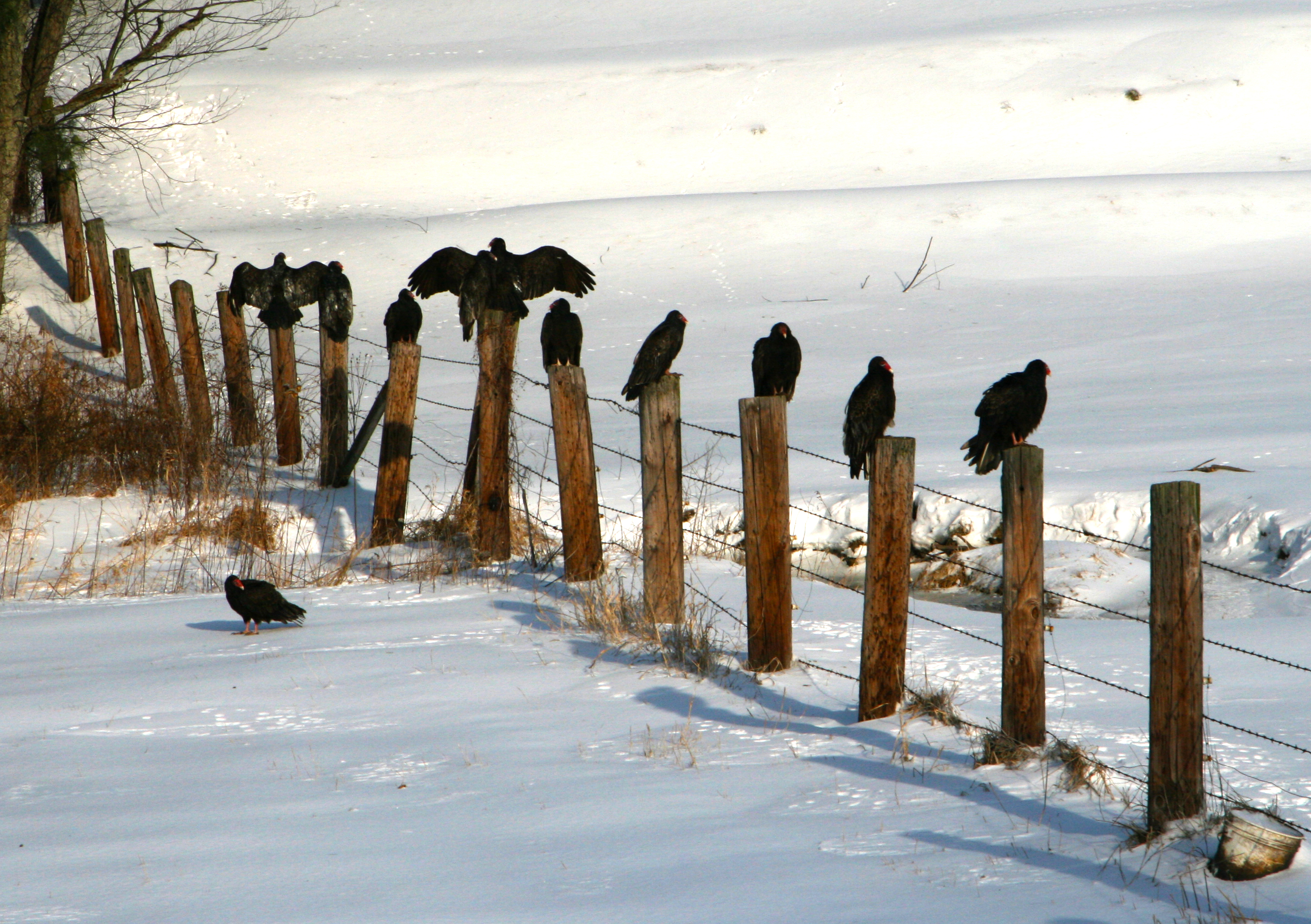Only a few hours ago I was running through a dense suburban jungle full of thorns, poison ivy, and mosquitoes, chasing down a vulture with a broken wing that, although injured and having just been shot at, ran more like a roadrunner than a bird of prey. Wait a second, I am getting ahead of myself here, let me give you the whole story.
Kelly Harrington, a concerned citizen and wildlife enthusiast, had been keeping an eye on an injured turkey vulture that had staked a claim in a small forested area in a Joppatowne neighborhood. The sliver of forest is bordered by a long fence that separates two different developments. Kelly had called several veterinarian hospitals and local wildlife rehabilitation facilities, desperate to find help before food ran out, infection set in, or winter got any closer. All were very helpful but gave the same answer, “if you can bring it to us, we will do our best to help it”. Kelly tried hard to capture the large scavenger by luring it into a dog carrier with some raw meat but was unsuccessful despite a great effort. With all of the noise disturbances in this heavily populated area the bird was easily spooked and could not be trapped.
Vultures are often feared and misunderstood. These scavengers are considered a bird of prey, just like eagles, hawks, owls, and falcons. They are an integral component of the food chain and help eliminate dead carcasses that would otherwise contribute to the spread of disease. There are two kinds of vultures in the area, the turkey vulture (has a pink head, larger V-shaped wingers with the with bottom of wings having a lighter coloration) and the black vulture (black head, smaller, lighter coloration at tips of wings). Both vultures glide through the sky, circling an area when they sense a deceased animal. Their prey either dies naturally, is killed by another predator, or more than likely hit by an automobile. Since vultures eat a lot of roadkilled animals they are often hit by cars. There is a good chance that is what happened to this vulture.
Eventually Kelly was recommended to give our organization a call, us being her last hope. We not only responded but offered to come rescue the bird, assuming it would not be an easy task. One of the main reasons we formed our group was to assist with local wildlife rescue since there are few people out there with ability to do so. Our hope was to supplement the other organizations that focus on the specialized care and treatment of injured wildlife by providing a capture and transportation service to their facilities. The call came through our emergency wildlife hotline and I decided to survey the situation so we knew what equipment we would need and how many people would be required. Seeing my vehicle arrive, Kelly was very excited to finally have the help she was seeking for this bird that has been suffering for over two months. She took me to the spot where she frequently saw the vulture perched. We quickly noticed that it was about fifteen feet up in a pine tree. As we talked it became weary of our presence and hopped down to the nearby fence. It fluttered its wings to try to stabilize itself but it could not hide the fact that it had a serious injury.
I decided that with so many places for the vulture to jump to, this would be a more extensive effort than originally anticipated. I let Kelly know we would collect some volunteers and return back by the weekend at the latest. As I drove home I made some calls to the other board members and rescue crew to plan out our approach to the situation. Just as I sat down for dinner I received very worried call from Kelly. She said that after I left the vulture had flown off the fence into the backyard of one of the nearby homes. She heard some commotion and the sound of several BB gun shots with someone shouting, “I got it!”, followed by a horrible shriek from the vulture. Fearing that just before the bird had a chance to be rescued that it was killed, Kelly called the local police to report it. Without any time to waste, I decided that I would have to tackle this alone without my normal team of experienced wildlife handlers. I grabbed some quick supplies- an animal carrier, a thick painters cloth, and some leather gloves. I also made sure to wear long pants and bring a long sleeve shirt to protect me from the sharp beak and talons.
When I arrived the bird was nowhere to be found. The police had already come and gone. They were kind enough to take the report but wildlife is out of their jurisdiction. If we had more evidence of who shot the bird or if they had killed it we would likely report it to the Maryland DNR Natural Resources Police. Please note that all birds of prey are protected under the Migratory Bird Treaty Act and it is illegal to shoot at them. Deciding not to let the fact that the shooters would not be served any justice on this day get us down, Kelly and I searched up and down the fence line. I peered over the fence into the yard where she heard the shots, hoping I wouldn’t see this scavenger now as a carcass itself. A few hundred feet further down into the woods I noticed a large black mass in one of the trees that had fallen over into the fence. To our relief it was our vulture. It didn’t seem to be hurt any worse from the shots, perhaps maybe just a little shook up.
After discussing a few options including trying another attempt at baiting the vulture with some meat, I decided to climb through the fence and just try to catch it with the the cloth and have Kelly follow with the animal carrier so we could transport it back to the vehicle safely. I first tried the sneak approach without success. The vulture hopped further and further into the woods. It let me get about thirty feet from it and started more quickly towards it. It tried to fly away but its damaged wing prevented it. This is when it started running. Instinctively I started running after it. It wove in and out of the thick brush, tearing through thorns and patches of poison ivy, with me following. I jumped over downed trees, stumbled through debris piles, and twisted through briar patches, trying to keep up with the determined evader. As my adrenaline pumped I decided I could not give up. After about fifteen minutes of this the vulture finally tired and got wedged against the fence and a mass of broken tree branches. I was able to throw the cloth over it and with Kelly’s help we worked it into the animal carrier. At this time we both fortunate enough to experience once of the most offensive scents nature has to offer. The vulture released a foul odor that I can best relate as the amplified smell of sour milk.
Despite now having a patchwork assortment of cuts in our arms, drenched in sweat, and being completely out of breath, we were ecstatic to have the bird now on its way to where it needed to go. It is amazing how far a caring heart and a little determination can go. The bird was brought back to a safe location until tomorrow when we are able to drop it off to have it’s condition evaluated by a veterinarian. If it can be helped then we will take it to a wildlife rehabber who will nurse it back to health. There is always the chance that it may have to be euthanized. If that is the case we will still take comfort that it is no longer suffering and that we did all we could.
If you find injured wildlife or want to help us with rescue efforts like these please call or email us!
443-333-WILD (-9453)
contact@suskywildlife.org

